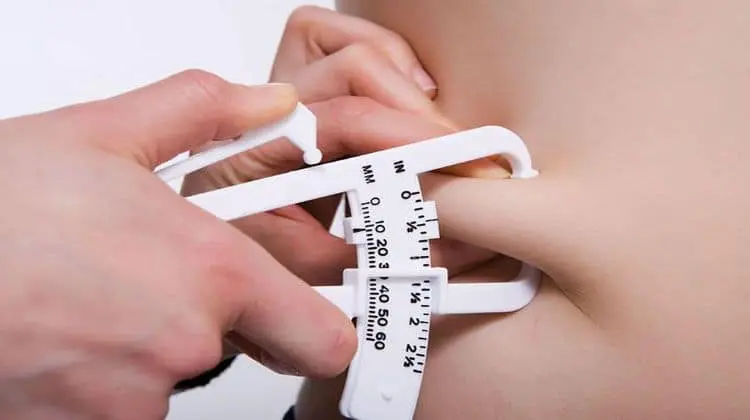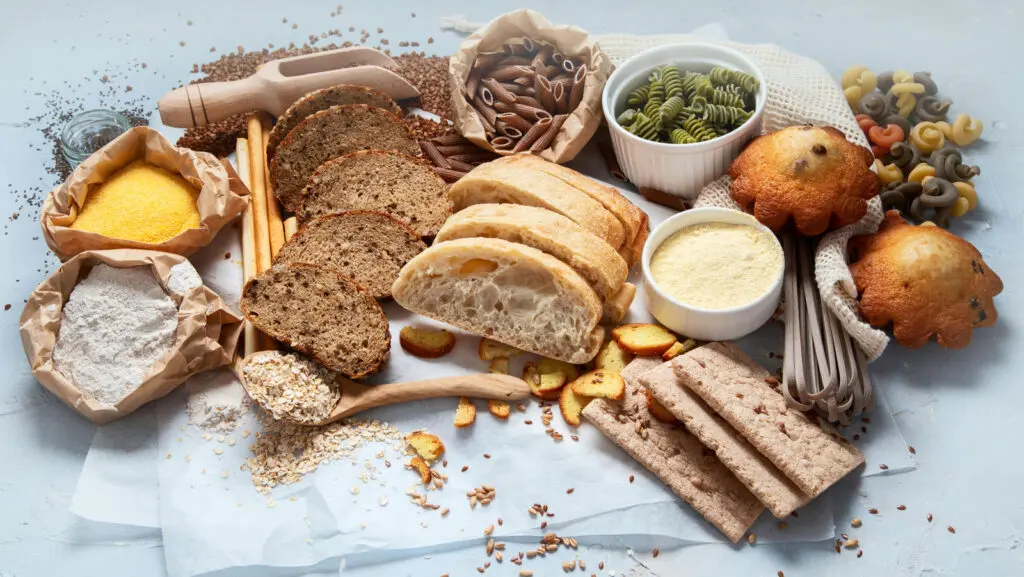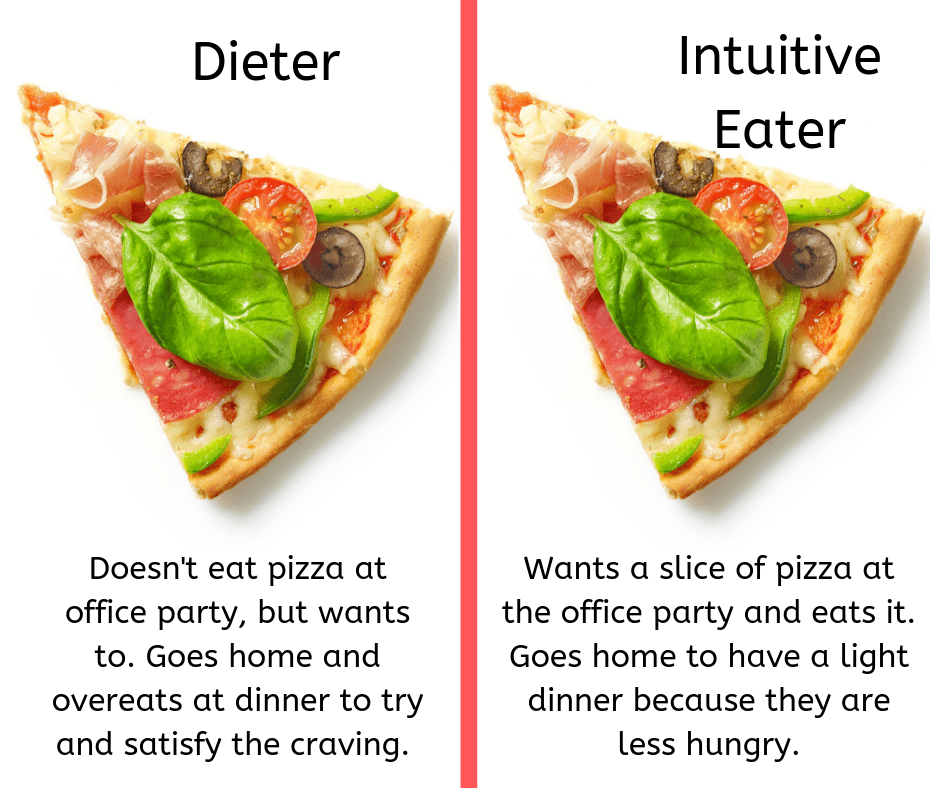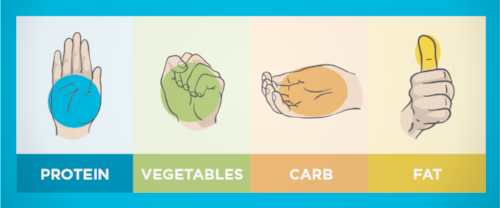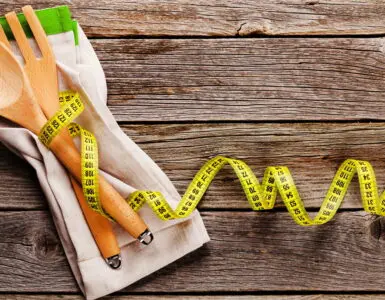Women often feel the pressure of society which sets the standards of beauty. Some may not worry about it, but some can find it hard to differ from the ‘ideal shapes’. When you start wondering how to lose 15 pounds in a month for a woman, you need to understand the reason behind it. If it’s just a desire to be like a colleague from the next department, it will probably demotivate you quite soon. If you don’t feel comfortable with this fat load, then you probably need a ‘lose 15 pounds in a month workout plan’, to help you mold a better shape. When you get into all the ins and outs of weight loss, you just want to get rid of it quickly and return to normal life. However, is losing 15 pounds in a month healthy and sustainable? How many pounds in one month are safe to lose? Follow the article to be aware of all the pitfalls.
Page Contents
How To Lose 15 Pounds In A Month Without Exercise
Weight loss is body weight reduction from voluntary (diet, exercise) or non-voluntary (illness) circumstances. Weight reduction must not be confused with fat loss, because it includes water loss and protein depletion.
According to American Heart Association, healthy weight loss is way much slower than 15 pounds a month – not more than 1 to 2 pounds, which makes 4 to 8 pounds a month. This is the one and only way to lose weight and, what’s more important, to maintain your results. [1]
If you speed up the weight loss, you are likely to get off the track quite soon, gaining weight again, along with ‘another-failure’ depression.
If you want to lose weight healthily, give more leeway to your body – increase the amount of time for getting adjusted to changes. 2 to 3 months of active life
1. Count Your Calories
Counting calories a day is boring and burdensome. However, its main goal is to show you a real picture. Let’s be honest, how often do you say “I don’t really eat anything, and gain weight just by smelling food”? Well, if you fall under this category, you’d better dedicate a few days to calorie counting, and see that every bite matters. It doesn’t mean that you need to limit food intake drastically, it aims to show you the real intake and get rid of illusions.
2. Avoid Or Reduce Your Intake Of Simple Carbohydrates
Carbohydrates are not that bad in spite of their notorious reputation. Carbs are the major providers of energy for us, they keep you going during the day and act like a shield to protect your muscle mass from shrinking.
Do you feel a need to eat something tasty when you are tired or under constant pressure? Chocolate candy can help you make a difference? Well, that’s because you are given a spike of energy and instantly start feeling better.
If the carbs work as energizers, why do people blame them for getting fat? The amount matters the most. If you have candy, a piece of chocolate, or chocolate pie once in a while, it won’t make you any harm if you are an active person. However, if the sedentary lifestyle is prevailing, all the calories and energy aren’t spent, and thus, are accumulated in the form of fat for further use. When this storage gets bigger, your fatty tissue grows as well and you start complaining about extra weight and…carbs as the main enemy! Reduce the calorie intake from fast food and simple carbs, and the amount of time spent on losing weight will reduce as well.
Carbs can be divided into 2 major groups: complex and simple.
Simple, or quick, carbs are responsible for blood sugar spikes and a quick release of energy. Chocolate, sugary things, refined sugar, fruits, sweets – they will immediately give you a push and help you go. However, they mainly lack nutrients and vitamins (except for fruits) yet are full of calories.
They are slow and provide you with energy for a longer time. You will not experience the energy boosts, but you will not feel exhausted again after half an hour.
3. Consume More Complex Carbohydrates
How to lose 15 pounds in a month meal plan should be filled with complex healthy carbs. Complex carbs go through a long chain of reactions, releasing energy and maintaining the same level of satiety for several hours. Besides, they’re full of nutrients, so you will replenish your energy levels as well. Examples: cereals, lentils, sweet potatoes, etc.
4. Choose Better Beverages
Beverages are important as they refill our fluid tank. However, as with carbs, the type matters. Fizzy soda drinks are fun to drink and tasty. You can gulp 1 liter of water to satisfy your thirst without even noticing it. However, your body will definitely notice 400-500 calories if you don’t move enough to burn them.
Instead of sugary drinks go for tea, coffee, fresh juices, and herbal teas. They are low on calories and vitaminized (like juice).
5. Drink More Water
60% of our body consists of water. Water is our life. If you can go without food for days, with no water you have miserable chances to survive. It’s important to keep the water balance throughout the day, replenishing its level whenever you feel thirsty. [2]
The U.S. National Academies of Sciences, Engineering, and Medicine determined that daily fluid drinking is:
- About 15.5 cups (3.7 liters) of fluids a day for men
- About 11.5 cups (2.7 liters) of fluids a day for women
These recommendations cover fluids from water, other beverages, and food. About 20% usually comes from food and the rest from drinks.
It’s not obligatory to pour in a glass of water if you don’t feel thirsty. Just keep sipping throughout the day.
6. Practice Intuitive Eating
Intuitive eating is a non-dieting approach, which is based on trust in your own body. You need to eat when you are hungry. However, it is important to distinguish real hunger from an emotional one. Sometimes you want to eat just because it’s a habit, or you are nervous, or simply there is nothing else to do.
If you follow your instincts, you will not overeat or consume more than you need for functioning. You will hear the STOP signal and really stop eating. But when you want to try yet another piece of something, it’s nothing but a psychological need because it pleases you. Your body, though, received what was needed.
7. Eat More Fibre-Rich Foods
Our digestive system helps to take all the useful nutrients from food and to remove the wastes from the body. To help your gut push the waste better, you need to consume a proper amount of fiber.
The recommended daily fiber intake is 28 grams, depending on age and gender. However, most Americans consume only about 16 grams each day, which is a worrying fact. A low-fiber diet may lead to constipation and a feeling of being bloated. To help and regulate the work of your intestine, consume a proper amount of fiber. When buying packaged food s check the nutritional value.
Dietary fiber can be found in supplements, fruits, vegetables, legumes, and whole grains. Some fiber, like psyllium, can also give you important health benefits. A high-fiber diet may also help reduce the risk of obesity, heart disease, and diabetes [3]
8. Eat More Protein-Rich Foods
Proteins are the building blocks of our body and every cell. The basic structure of a protein is a chain of amino acids. If you have a low-protein diet, your body has no chance to repair cells and make new ones.
After getting into the digestive tract protein is broken down into parts which are known as amino acids – essential components of good health.
Amino acids are classified into three groups:
- Essential
- Nonessential
- Conditional
Essential amino acids cannot be produced by the body and must be supplied with food. That’s why balanced nutrition during the day is important.
Nonessential amino acids are produced in the normal breakdown of proteins.
Conditional amino acids are needed in times of illness and stress.
Amino acids can be found in:
* animal sources such as meats, milk, fish, and eggs.
*plant sources such as soy, beans, legumes, nut butter, and some grains (such as wheat germ and quinoa).
You do not need to eat animal products to get all the protein you need in your diet.
9. Eat More Vegetables
Vegetables are vital for our health. They provide us with many nutrients, including potassium, dietary fiber, folate, and vitamins.
A diet rich in vegetables and fruits can lower blood pressure, reduce the risk of heart disease and stroke, prevent some types of cancer, lower the risk of eye and digestive problems, and have a positive effect on blood sugar, which can help keep the appetite in check.
Another important element of vegetables is their caloric value – they provide energy and fill your stomach quite soon, so you cant even overeat them. Besides, they are low in calories:
one kilo of cruciferous vegetables is up to 200-300 kcal. Can you eat a kilo of cabbage, probably not?
One croissant is higher in calories – around 400 kcal. Will you be satisfied with only one croissant? Probably no. Feel the difference.
By consuming vegetables, you stay full but the calorie intake is lower.
10. Mind Your Portions
Everyone tells you to control your portion of food, but how on Earth should you know what’s a normal size of a serving for eating healthy food? [4]
- Vegetables and fruits – ½ of your plate, aim for color and variety
- Whole grains – ¼ of your plate – whole wheat, barley, wheat berries, brown rice, quinoa, etc.
- Protein – ¼ of your plate – fish, poultry, beans, legumes, dairy products, and nuts.
- Healthy plant oil – in moderation – olive, canola, soy, corn, sunflower, and peanut oils.
Any weight loss plan calls for control of food portions.
How To Lose 15 Pounds In A Month With Exercise
Dieting and a healthy regimen are just 50% of success. Apart from providing nutrients, you need to add physical activities to your daily routine – it will help you strengthen the body, increase metabolism, and burn more glycogen cells, shrinking your fatty tissue. What are the best ways to increase your activity levels?
Do More Cardio
Cardio workouts include everything that makes your heart beat faster and transfers more oxygen around the body, providing every cell with energy. The intensity varies from low to high.
-
Running
Running is one of the most popular forms of physical activity, which can make a full workout plan to lose 15 pounds in a month. Is is appealing in terms of calorie expenditure, place of training, time, and cost.
Running is immensely helpful for our physical and mental health. When you add it to your daily routine, you get:
- Strong bones, as they constantly withhold great pressure of your weight and thus, the bone structure becomes dense.
- Strong muscles.
- Improved fitness level and endurance.
- Better psychological well-being, as it increases the level of serotonin – the happiness hormone.
- Strong heart muscles, and improved lung capacity.
- The anti-aging effect, as it rejuvenates your body.
If the idea of running to lose 15 lbs terrifies you, try jogging. The intensity is low, so you won’t feel like a loser. The number of calories burnt is lower too, but you will still get the benefits of aerobic training. Besides, it can be a good base for running.
Tips and tricks:
- Before you start any type of activity, check up with your doctor. Especially if having chronic diseases and obesity – you may just aggravate the problems. Medical supervision is a must.
- Don’t aim for speed at the beginning, brisk walking can give a good start – 30 minutes will be just fine. Build up a schedule and gradually increase the time of workout, combining walking with jogging.
- Warm-up takes little time but prevents injuries. Also, don’t forget to cool down, letting your heart rate stabilize.
- Plan rest day – your muscles must recover, otherwise, you will accumulate fatigue, and working out will seem like a burden.
- Plan your route avoiding sandy and too hard surfaces
- Avoid running along the roads, especially during rush hours – car pollution will eliminate all the possible benefits of cardio for the lungs.
- Buy good shoes, as it’s your support and amortization.
- Don’t put on too warm clothes; go for layers, instead of one heavy coat. You may start sweating really soon.
- Don’t go on a very strict diet, if you are involved in such training. You need strength to perform well.
-
Jumping Rope
Do you still think that jumping rope is only for kids and girls in particular? Look at the boxers – they are not that skeptical, as they know all the benefits of rope jumping. Which are:
- improved coordination and agility
- effective endurance training
- development of footwork quickness
- fat burn during a relatively short performance
As there are different types of jumping ropes, you’d better start with a light-weight plastic speed rope is a good place to start. Avoid heavy leather or weighted ropes as they are for more experienced trainees.
Common rope lengths are from eight to ten feet. One way to determine how long your rope should be is to step both feet in the middle of the rope. The handles should reach up to approximately armpit height.
How to lose 15 pounds in a month? Add jumping rope to your activity routine.
-
Kickboxing
Kickboxing is a fantastic activity that includes high intensity and a wide range of movements. Almost every movement requires you to move in unison and a coordinated manner. While moving you engage your legs, glutes, core, and shoulders. A kickboxing workout is a full-body workout, with all your muscle groups being engaged. Not only do you have to move your whole body, but you also coordinate all the movements. Kickboxing elevates your heart rate and burns body fat. You lose weight, build muscle, and practice martial art – a perfect combo.
-
Cycling
15 pounds bother you a lot and you want to lose weight without annoying gym and exercises? Plan regular physical activity. If you have health restrictions for high-intensity cardio, try cycling – a low-intensity training. It can be enjoyed by people of all ages and fitness levels. It doesn’t go hard on your joints, so it’s recommended as a workout for obese people.
To get the benefits of cycling, you don’t need to ride 100 km daily or weekly. Having a ride to work or shop, weekend park excursion, etc. The longer you practice, the better endurance you build, making your way to other places outside your hometown.
Health benefits:
- Less strenuous than other workouts, as it’s low-impact.
- Engages various muscle groups, toning your body.
- No special preparation – you just need to know how to pedal, a skill you acquired in childhood.
- No speed limits- you choose the pace you want.
- Good way of having fun with friends or alone while burning fat.
- Improved fitness level, coordination, posture, and cardiovascular health.
- Prevention of heart diseases and type 2 diabetes.
- Reduced anxiety and level of stress.
Want to lose 15 pounds a month? Include cycling in your daily routine.
-
Swimming
Swimming is a great way to keep fit, stay healthy, and make friends. It’s no-impact cardio, which means that you don’t have to perform against gravity force. It’s a perfect choice for people with health issues, obesity, kids, and obese older people.
Swimming is also a great type of recreation and fun, while muscle training becomes one of the pleasant side effects.
Common styles:
- breaststroke
- backstroke
- sidestroke
- freestyle.
Swimming is an all-round activity bringing you a laundry list of benefits:
- It ‘washes’ your stress away and keeps the heart rate up.
- Helps to build muscle strength and endurance, improving the fitness level overall.
- Helps to control body weight, tones muscles, and improves your strength.
- Alleviates back pain, and works well against joint pain of any origin.
If you want to reach your weight loss goals with the help of swimming, you need a swimsuit and a pair of goggles. Before every swimming sessions make sure you warm up.
-
Spiderman Walk
The spider crawl is an intermediate workout that raises your heart rate and strengthens the muscles in your upper and lower body.
When performed correctly, it raises your heart rate, builds core strength, and targets your shoulders, chest, upper back, triceps, quadriceps, calves, glutes, hamstrings, adductors, and abductors. Looks like an all-around exercise.
How to do it?
- Get down into a plank position with your hands shoulder-width apart. Shoulders are directly over your hands, and legs behind you; the feet are hip-width apart.
- Push the toes of your right foot into the floor. Raise the left foot off the floor and externally rotate the leg. Brace your core and glute muscles, and bring your left knee to the outside of the left elbow. When the knee gets close to the elbow, squeeze the core muscles.
- Extend your right arm out in front of you, palm on the floor, while your left knee comes towards your left elbow.
- While staying low to the ground, alternate your bent knee and hand crawling forward.
- Keep moving alternating legs and hands.
-
Push-Ups
Push-ups make the core of any training. They target the chest, shoulders, triceps, back, and legs. Throughout the push-up your spine should be neutral, forming a straight line with the whole body – from your feet to the crown of your head. A basic push-up strengthens the upper body – chest, shoulders, core, and back muscles.
How to do it?
- Start with your arms extended and palms shoulder-width apart. Place your toes on the floor in line with your legs.
- Brace your core muscles, glutes, and legs to align your spine.
- Keeping a straight back bend your elbows to descend in a controlled motion, until your chest almost touches the floor. Your elbows are tucked close to your sides.
- While breathing out, push your palms toward the floor and return to the starting position. Contract the chest and tricep muscles while bracing your core tightly.
- Repeat for the desired amount of reps and sets.
-
Burpees
Burpees are a full-body exercise that increases heart rate, strength, agility, and flexibility. To reap all the benefits of it and decrease body weight, you need to follow a proper form.
How to do it?
- Stand straight with your feet shoulder-width apart.
- Squat down and put your hands in front of your feet.
- Jump back fully extending your legs and taking a plank position.
- Do a push-up, jump forward, and then push through the heels to return to the starting position.
- Repeat until the set is complete.
You will be interested in the article — V Shape Butt Exercises.
-
Mountain Climbers
Mountain climbers is a bodyweight exercise that engages several muscle groups improving your balance, agility, coordination, strength, flexibility, and blood circulation. This workout helps you burn more calories, and improve joint movement and overall stability. Another benefit – is no tools or equipment.
How to do it?
- Start with a press-up position with hands shoulder-width apart directly beneath the shoulders.
- Quickly pull your left knee towards your chest, but don’t touch the floor, and return to the start position.
- Alternate the legs and do the same for the right leg.
- The number of reps is up to you.
-
Walking Lunges
Walking lunges strengthen the leg muscles, and also work the core, hips, and glutes.
How to do it?
- Stand up straight with feet shoulder-width apart. Hands are on your hips or at your sides.
- Lean forward, taking a step with your left leg. Shift all your weight into your left heel.
- Bend your left knee at a 90-degree angle, lower down into a lunge position, and stay on your right leg’s toes.
- Keeping your right leg still, repeat the same movement with your right leg.
- Alternate legs while walking forward.
- You can do 10 to 15 reps on each leg, repeating with 2 to 3 sets.
Tips and tricks:
- Don’t rush with quantity, learn the proper form first.
- Your legs should be at 90-degree angles at the knees when being at the bottom.
- To emphasize the quads, take slightly smaller steps and drive up through the ball of the foot.
- To emphasize the glutes and hamstrings take a slightly larger step and drive up through the heel.
How To Lose 15 Pounds Of Belly Fat In A Month
-
Kettlebell Swings
Kettlebell movements a great strength training and are based on the “posterior chain” muscles of the back and gluteal muscles, hip extensors, and paraspinal group muscles. They can be performed double-or single-handed on single or double kettlebells
How to do it?
- Stand with feet slightly wider than shoulder-width apart. Keep the kettlebell in front of your body with both hands, and arms straight.
- Slightly bending in your knees with a flat back, hinge at your hips, and swing the kettlebell back through your legs. At the very moment stand and swing the kettlebell out in front of your body, up to shoulder height.
- Push your hips forward, and engage your glutes and core as you stand up straight.
- When the kettlebell reaches shoulder height, your knees should be straight and your glutes contract in a full hip extension.
- Let the kettlebell swing back down through your legs, while hinging at the hips.
- Repeat as many times as you want.
-
Sit-Ups
The sit-up is endurance training to strengthen, tighten and tone the abdominal muscles and get rid of belly fat. Being similar to crunches, sit-ups offer a fuller range of motion.
How to do it?
- Lie down on the floor/mat. Place your legs hip-width apart, your knees bent, and your feet are flat on the floor. Keep your hands on the sides of your thighs and push your lower back to the floor.
- Brace your core. Keep your neck in line with the spine.
- Breathe out and use your core to sit up. While doing it, your hands slide up from your thighs to your knees. Shoulders must be relaxed.
- Breathe in and slowly in a controlled way roll back down to the starting position. The lower back must be flat on the mat.
- Again, breathe out and sit up.
- The number of reps is up to you, however, don’t go for quantity first, choose quality.
-
Crunches
The crunch is a core exercise that targets “six-pack” muscles, as well as the obliques. It can be performed at any fitness level with feet anchored or unanchored.
How to do it?
- Lie flat on your back with your feet flat on the floor; knees are bent at a 90-degree angle.
- Now place your hands lightly on the head side keeping your elbows in. Don’t lock your fingers behind your head.
- While pushing slightly of your back down on the floor, begin to roll your shoulders off the floor.
- Keep pushing down as hard as you can with your lower back as you contract your abs and exhale. Your shoulders should come up off the floor only about four inches, and your lower back should remain on the floor.
- At the top of the movement, contract your abs. Focus on slow, controlled movement.
- Come down slowly to the starting position as you inhale.
- Repeat for the recommended amount of repetitions.
-
Planks
Plank is a diamond among the exercises. It is suitable for busy people who have no time to exercise but need to strengthen their core and muscles from shoulders to feet. You can burn a large number of calories with this exercise without spending too much time.
How to do it?
- Start on all fours with your wrists directly under your shoulders and your toes on the floor.
- Step one foot back and then the other as you engage your abs and straighten your legs.
- Press the floor away from you with your hands.
- Form a straight line from shoulders to heels. Hold for 30 to 60 seconds.
-
Bicycle Crunches
The bicycle crunch is an effective ab exercise, as it reaches the deep abs and the obliques. It’s a great workout to strengthen your body and burn extra calories.
How to do it?
- Lie on your back on the floor and press your lower back into the floor. Bend knees while keeping feet flat on the floor.
- Place your hands behind your head, and interlace the fingers.
- Bring the knees up, with shins parallel to the floor, while lifting shoulder blades off the floor.
- Straightening your right leg out at about a 45-degree angle, turn your upper body to the left, bringing your right elbow toward your left knee.
- Return to center, with both knees bent and elbows wide.
- Repeat on the other side and keep doing it for as long as you want.
How Many Calories Should I Eat Per Day To Lose 15 Pounds In A Month?
The number of calories is strictly individual. You can’t follow the pattern of your friends or colleagues or just someone from the social network. You need to take into account the age, height, initial weight, level of activities, fitness level, etc.
When you want to follow a healthy weight loss journey, create a 500 – 1000 calorie deficit, making your body use the fatty tissue for energy.
You will be interested in the article — Burn 1000 calories workout.
Is Losing 15 Pounds In One Month Safe?
Losing 15 pounds a month is neither safe nor sustainable. You can lose this amount, however, it will lead to exhaustion. After this weight-loss race, you will want nothing but recovery. There’s a high chance of overeating during this period, as your brain will start saving fat for a rainy day, in case you will put him under the same marathon. Obviously, it will lead to weight gain and a slower metabolism.
Can You Really Lose 15 Pounds In A Month?
It’s challenging and exhausting, however obtainable. You can hit the gym every single day and go on a low-carb diet weight loss in 2 weeks or keto diet with a low level of calories daily. What will you get as a result? Significant weight loss, chronic fatigue, hatred towards physical exercises, and healthy dieting. Impressive?
Instead, go for a slow and steady pace, letting your body get adjusted to a new regimen and teaching it to be active. This approach certainly is more time-consuming, however, the results will not be temporary.
The Bottom Line
Weight loss is a sore spot for many, especially ahead of important events. However, it’s crucial to understand that rapid weight loss can’t be tentative. It requires commitment and changes in your lifestyle. With proper and regular training, accompanied by healthy nutrition, you can reach the desired goals. Yet, it’s important to remember – rushing for quantity will never lead to the quality side. Just by being patient but persistent, you can create a new look and body complexion.
Don’t postpone your weight loss; planning is a good idea, however, the first step is the most decisive – if you had started 30 days earlier, you would see the results today. Your well-being can’t wait.
FAQs
🥑How to lose 15 pounds in a month diet plan❓
🏊♀️How to lose 15 pound in one month❓
🤸♀️Can you lose 15 pounds in a month❓
Sources:

